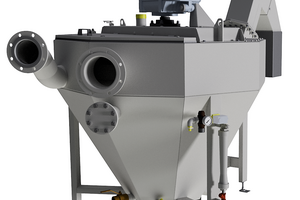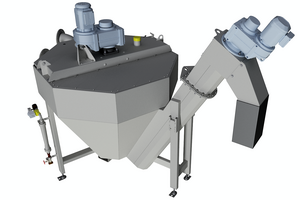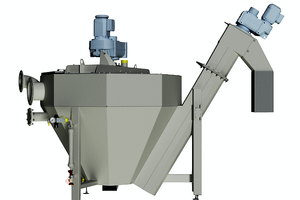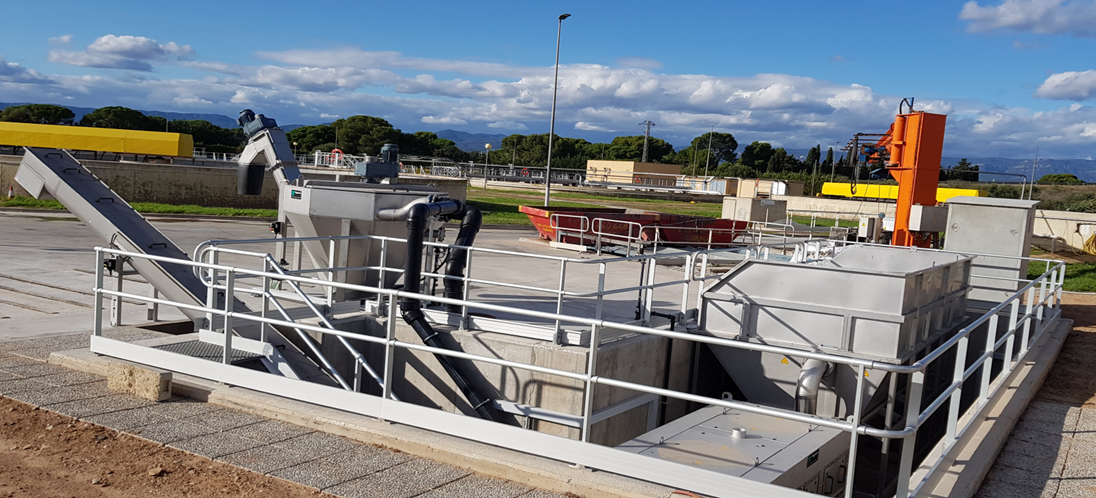Noggerath®
Circular Grit Washer
GWC
Successful concept for municipalities and industry: environmentally conscious disposal, massive reduction in the amount of residual sand that has to be disposed of, lower transport costs, improved gas production in sludge digestion.
Unique Features
- Robust, thick-walled spiral
- Spiral and agitator are mounted on the drive end only, no submerged bearing
- No separate outlet required for organic matter
- Less fine grit discharge in the effluent and low wash water consumption
- Less turbulence in the washing zone and thus low ascent speed of the sand grains
Design sizes & performance
| Type | GWC 300 | GWC 750 | GWC 900 | GWC 1,000 |
|---|---|---|---|---|
| max. flow rate [l/s] | 8 | 12 | 16 | 25 |
| max. capacity grit separation [m3/h] | 0.30 | 0.75 | 0.90 | 1.00 |
| Organic matter | ≤ 3% | ≤ 3% | ≤ 3% | ≤ 3% |
| Volume reduction | up to 85% | up to 85% | up to 85% | up to 85% |
| Discharge height [mm] | 1,610 | 1,610 | 2,045 | 2,295 |
| Water surface [m2] | 1.60 | 2.10 | 2.80 | 4.15 |
| Water volume [m3] | 1.10 | 1.45 | 2.38 | 3.90 |



